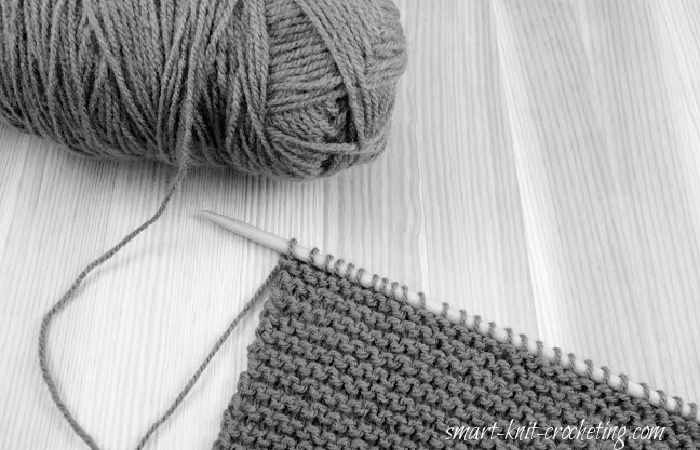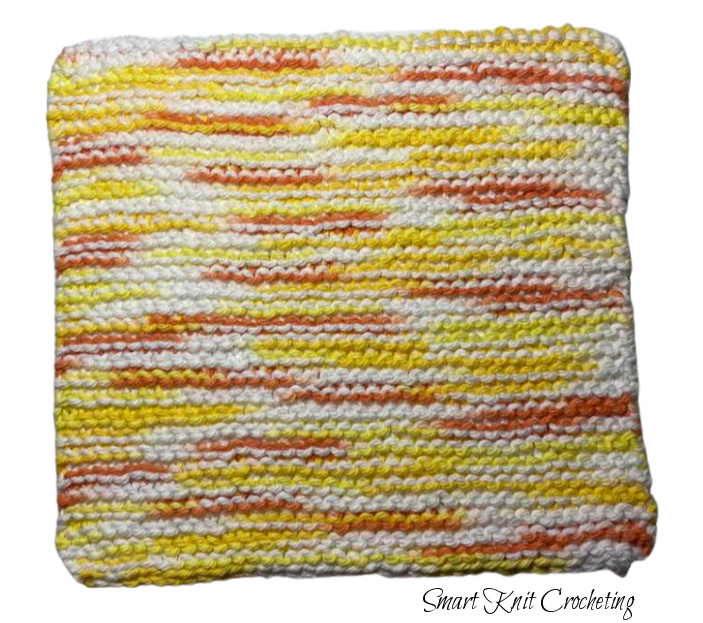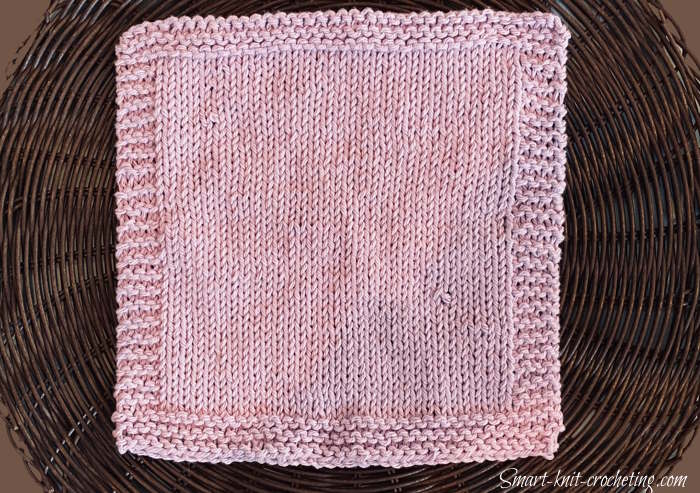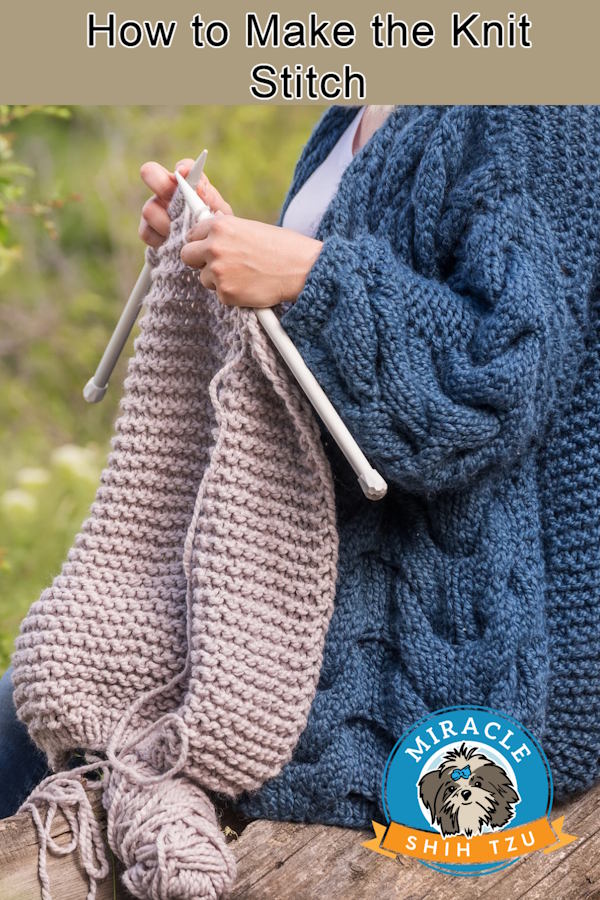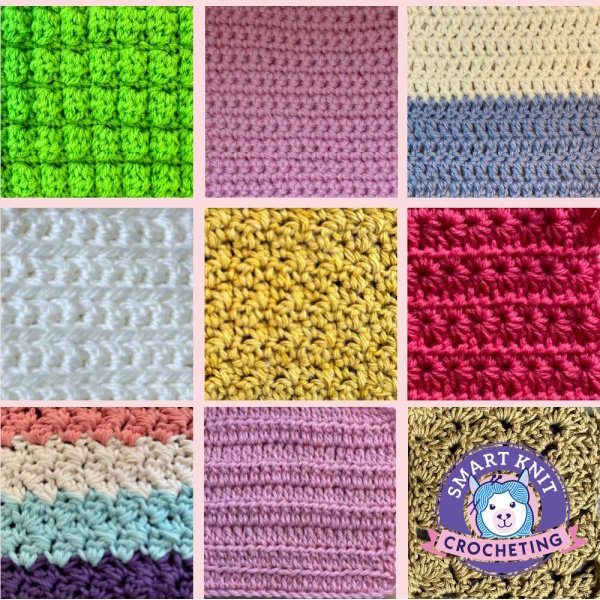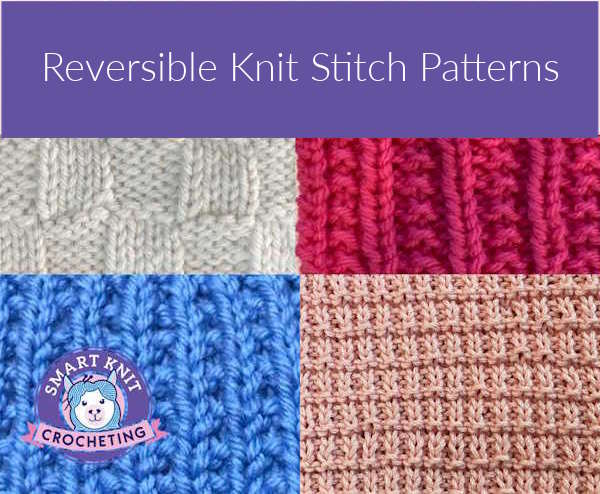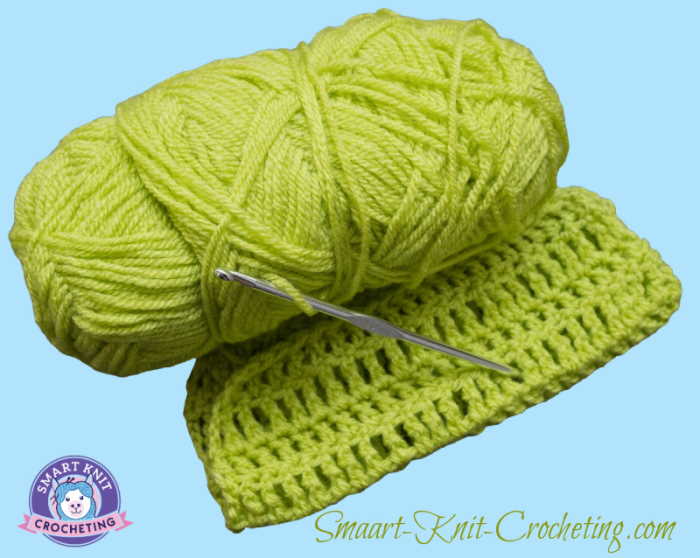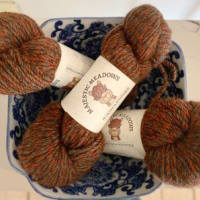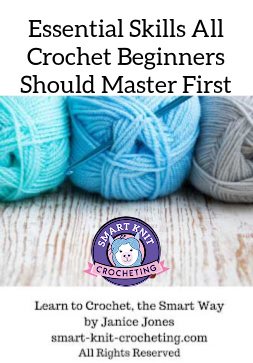The Knit Stitch
The KNIT STITCH or garter stitch is one of the two major stitches in knitting Knit and Purl Stitches. If you are new to knitting, this is the stitch you will learn first. Once you master the knit stitch and the purl stitch, there are endless patterns you can tackle and you will become a confident knitter in no time.
The Knit Stitch Abbreviation
When you see the knit stich in a pattern, it is likely to be abbreviated. We use abbreviations for stitches and techniques for brevity. As you continue in your knitting journey, you will encounter many abbreviations.
The abbreviation for the knit stitch is either K or k.
To make the knit stitch, you will first need to understand how to hold the needles and yarn. While this may seem simple at first, it does take some time to feel comfortable with this, so we'll take a little time to understand what you need to know. There are two common ways beginners learn to knit: The English Method and the Continental Method.
Making the Knit Stitch English Vs. Continental Methods
Learning to knit requires practice and time. It takes time to develop that muscle memory in order to knit without thinking about every step. Think about a skill that you do today without even thinking about it - typing on a keyboard or riding a bike. Both skills were probably hard when you first tried them, but now, you can accomplish them without even thinking. Knitting is no different, so be patient with yourself.
Most western knitters hold their yarn in either their right or left hands. Either way is perfectly fine, but when you are just beginning, you will need to try both methods to see which one feels more comfortable to you.
Continental Knitters
If you like to hold your yarn in the left hand, you are a continental knitter. Many crocheters trying knitting for the first time will use this method because they hold the yarn in their left hand when crocheting.
Many people believe that this method allows you to knit faster. You be the judge for yourself.
- May be more comfortable for crocheters
- May be faster
- Easier on the wrists
- Some knitters find this style to be more relaxing, but the same can also be said for English Knitters.
English Knitters (sometimes called American)
Knitters that hold the working yarn in their right hand are known as English knitters. Some knitters will learn to knit using the English method and then switch to the continental.
There is a benefit for being able to do both, especially as you progress through your knitting adventure. Some colorwork knit techniques such as stranded knitting can be done proficiently using both methods, by holding one color of yarn in each hand.
- May be more comfortable for beginners
- Some say that tension can be controled better using this method
- Experienced English knitters may advance to a method called flicking which can be very fast.
- May cause wrist pain for some
Getting Started
Gab your yarn and some needles and let's begin. I recommend using some medium weight yarn and a pair of size U.S.7 (4.5 mm) or U.S. 8 (5.0 mm) needles. If you are not sure what to get, check out my article on yarn for beginners.
Before you can make the knit stitch, you will need to get some stitches on your needle. One of the most common ways is to use the Longtail cast on.
Now let's take a look at those stitches.

Each loop hanging on the needle consists of two half-loops or legs. When looking at the work in front of you, the front loop is facing you or is the one closest to you. The back loop is on the back of the needle or the one that is farest from you.
You will be inserting your needle through the leg that is closest to you.
How to Make the Knit Stitch Continental
1. Insert the Right Needle
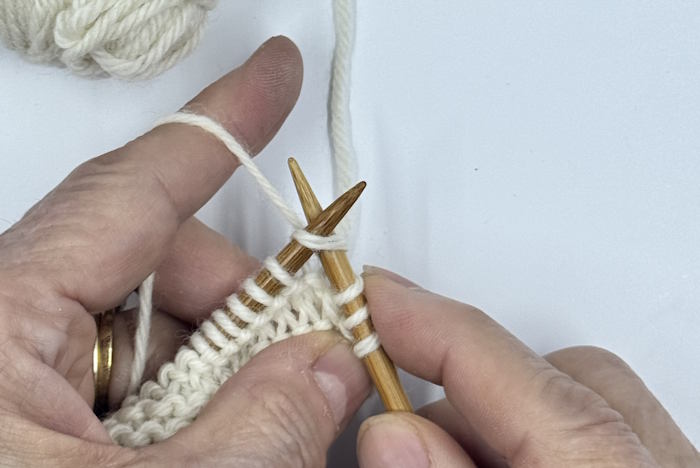 While holding the working yarn in your left hand, insert the right needle into the leg of the stitch facing you.
While holding the working yarn in your left hand, insert the right needle into the leg of the stitch facing you.2. Wrap the Yarn
 Wrap the yarn from back to front and over the needle. Hold in place
Wrap the yarn from back to front and over the needle. Hold in place3. Pull Through
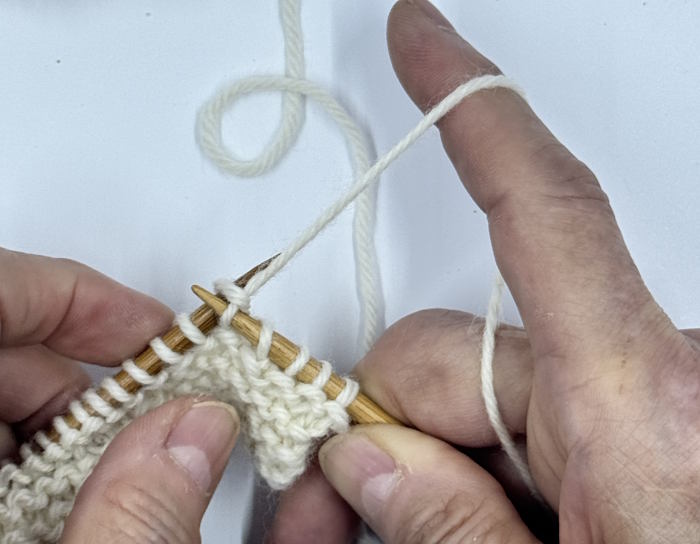 While keeping the yarn taut, pull the right needle under the left needle and through.
While keeping the yarn taut, pull the right needle under the left needle and through.4. Remove Old Stitch From Left Needle
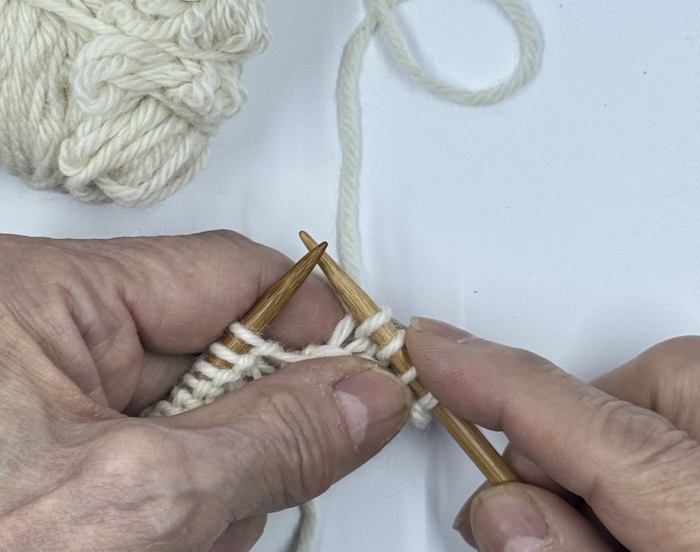 With the new stitch on the right needle, slide the old stitch off the left needle.
With the new stitch on the right needle, slide the old stitch off the left needle.Repeat these instructions across the row until you get to the end, then switch hands so that the stitches to be worked are in the left needle. Continue in this manner.
Make the Knit Stitch, English Style
1. Insert the Right Needle
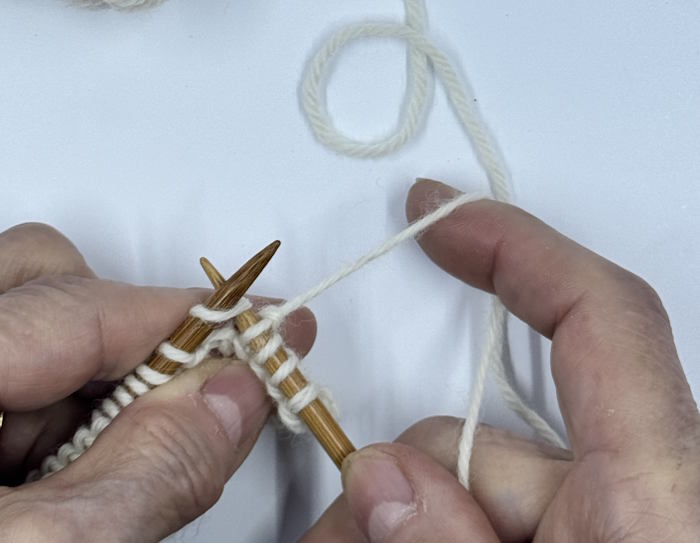 With the working yarn held in the right hand, insert the right needle tip into the leg of the stitch facing you.
With the working yarn held in the right hand, insert the right needle tip into the leg of the stitch facing you.2. Wrap the Yarn
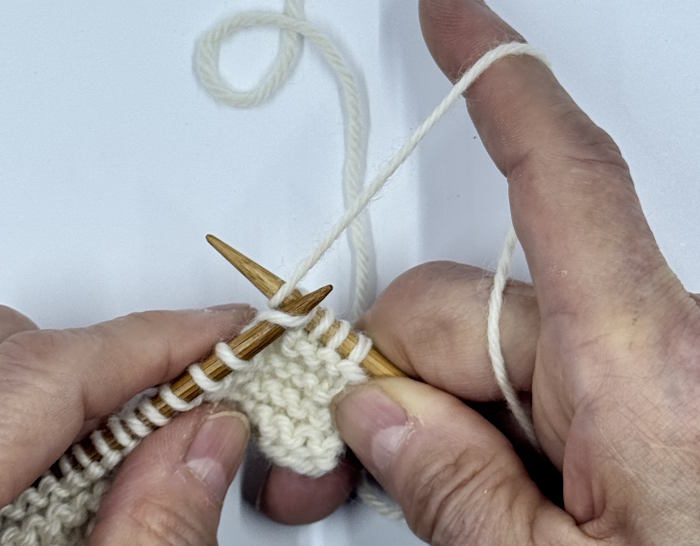 Wrap the yarn from back to front and over the needle. Hold in place.
Wrap the yarn from back to front and over the needle. Hold in place.3. Pull Through
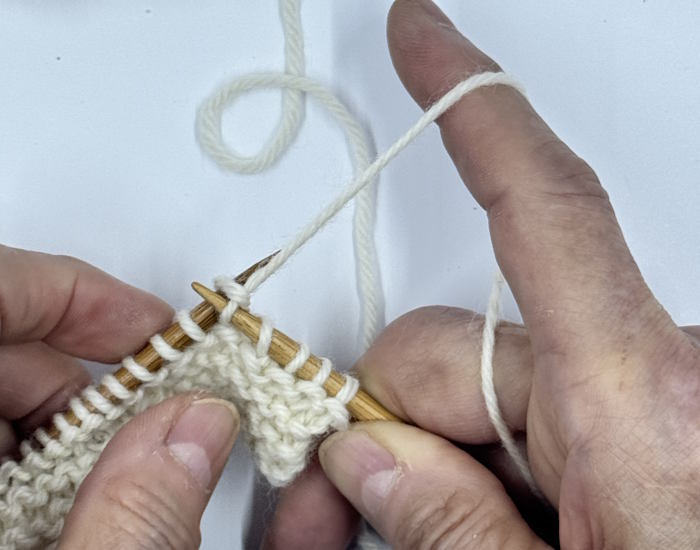 While keeping the yarn taut, pull the right needle under the left needle and through.
While keeping the yarn taut, pull the right needle under the left needle and through.4. Remove Old Stitch From Left Needle
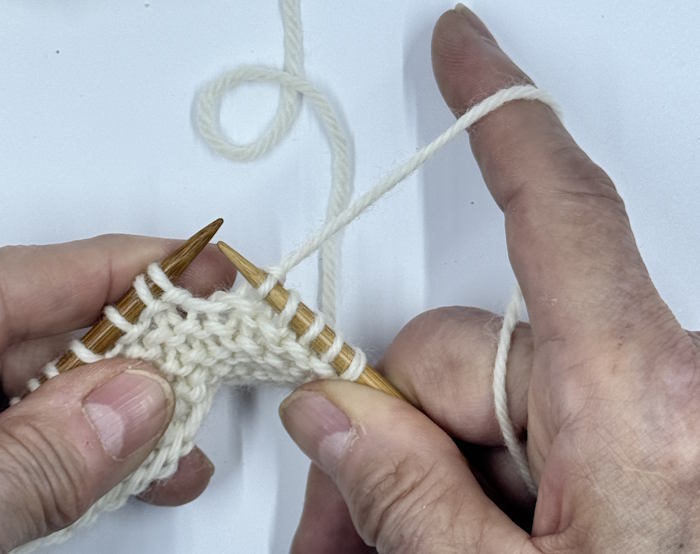 With the new stitch on the right needle, slide the old stitch off the left needle.
With the new stitch on the right needle, slide the old stitch off the left needle.Repeat these instructions across the row until you get to the end, then switch hands so that the stitches to be worked are in the left needle. Continue in this manner. After working the knit stitch for a few rows, it will look like this.
 When you make knit stitches only, the stitch pattern is called the garter stitch pattern.
When you make knit stitches only, the stitch pattern is called the garter stitch pattern.The Knit Stitch: What Comes Next?
Don't expect to be an expert after just a couple of rows. It takes time. After you feel comfortable and want to move on, try the purl stitch. If you have decided on the style of knitting (Continental or English) that feels best to you, stick with it for the time-being as you continue to practice. Try the stockinette stitch pattern next. It requires that you knit one row and purl one row.
Last Words
Congratualtions! You have succeeded in making the knit stitch. With a little practice, you'll be making project after project. Remember that learning to knit takes time and patience. Building up the muscle memory is vital for success and that can take time. Be kind to yourself and don't expect perfection. The more you knit, the better you'll get.
Happy Knitting,
Janice
